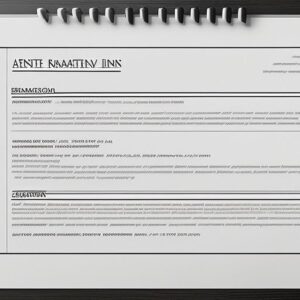Want better answers from AI tools like ChatGPT? This easy guide gives you 100 smart and unique ways to ask questions, called prompt techniques. Each one comes with a simple example so you can try it right away—no tech skills needed. Perfect for students, writers, marketers, and curious minds!
- Use Clear Instructions – “Write a 3-paragraph summary of the French Revolution.”
- Set a Role – “Act as a financial advisor and explain compound interest.”
- Define Output Format – “List 5 dog breeds in a table with size and lifespan columns.”
- Limit Word Count – “Describe photosynthesis in under 50 words.”
- Request Step-by-Step Reasoning – “Solve this math problem step by step: 15 * (3 + 2).”
- Add Few-Shot Examples – “Translate the following like this: ‘Hello’ -> ‘Hola’, ‘Goodbye’ -> ‘Adiós’. Now translate ‘Thank you’.”
- Use Delimiters – “Summarize the text between the triple quotes: “””Text here”””.
- Ask for a Summary – “Summarize this news article in 5 bullet points.”
- Specify a Tone – “Write a friendly and upbeat invitation to a birthday party.”
- Set the Perspective – “Write a short story in second person point of view.”
- Give Context or Background – “Assume the reader has no prior knowledge of blockchain. Explain it simply.”
- Ask for a Comparison – “Compare electric cars and gasoline cars in terms of cost and maintenance.”
- Use Constraints – “Explain the theory without using scientific jargon.”
- Request a Table – “Provide a table comparing iOS and Android features.”
- Ask for Examples – “Give 3 examples of metaphors used in literature.”
- Use Analogies – “Explain machine learning using a cooking analogy.”
- Include Target Audience – “Explain taxes to a high school student.”
- Use a Template – “Fill in this template: ‘My name is [Name], and I am a [Profession].'”
- Request a List of Questions – “Create 10 questions for a beginner Python course.”
- Add Keywords to Include – “Write a blog post about SEO using the keywords ‘traffic’, ‘backlinks’, and ‘Google ranking’.”
- Ask to Avoid Certain Words – “Explain Newton’s laws without using the word ‘force’.”
- Set a Scene or Roleplay – “Act as a job interviewer and ask me 5 technical questions.”
- Specify a Format Style – “Write a LinkedIn-style professional bio.”
- Use Time Travel Prompts – “Describe a smartphone as if it’s being explained in the year 1800.”
- Request Multiple Variations – “Give me 3 alternative titles for a productivity blog post.”
- Ask for a Checklist – “Make a checklist for planning a wedding.”
- Request Only Facts – “List factual differences between alligators and crocodiles.”
- Highlight Key Ideas – “Summarize this article and bold the main ideas.”
- Ask for Counterarguments – “What are the counterarguments to universal basic income?”
- Use Fill-in-the-Blank Format – “Complete this sentence: ‘Photosynthesis is the process by which _____.”
- Request FAQs – “Write 5 FAQs about online learning.”
- Ask for Simplified Language – “Explain blockchain in simple terms for a 10-year-old.”
- Set a Reading Level – “Write a news article at a 6th-grade reading level.”
- Use “Explain Like I’m 5” – “ELI5: How does Wi-Fi work?”
- Request Myths vs Facts – “List 3 myths and facts about caffeine.”
- Request Pros, Cons, and Verdict – “List pros and cons of remote work and give your final recommendation.”
- Ask for a How-To Guide – “Write a how-to guide for making a budget spreadsheet.”
- Ask for Do’s and Don’ts – “List do’s and don’ts for giving a presentation.”
- Request Tips or Tricks – “Give 5 tips for staying focused while studying.”
- Ask for Best Practices – “What are best practices for writing clean code?”
- Add Domain Expertise – “From a legal perspective, explain the implications of this contract.”
- Request a Story – “Tell a short story about a time traveler in the 1800s.”
- Use Humor or Sarcasm – “Explain office politics using sarcastic humor.”
- Ask for Similes or Metaphors – “Explain anxiety with a metaphor.”
- Ask for a Summary at the End – “Write a blog post and add a summary at the end.”
- Ask for Dialogue – “Create a conversation between a barista and a customer.”
- Request a Character Bio – “Create a character profile for a detective in a mystery novel.”
- Ask for Cause and Effect – “Explain how pollution leads to climate change.”
- Ask for a Timeline – “Create a timeline of World War II major events.”
- Request Flowcharts in Text – “Describe the steps to troubleshoot a Wi-Fi issue in flowchart format.”
- Ask for Pitfalls to Avoid – *”What are common mistakes when learning to code?”
- Request Success Stories – *”Share a short story of someone overcoming failure.”
- Use Hypotheticals – *”If dinosaurs lived today, how would cities be different?”
- Request Structured Arguments – *”Give a claim, support it with 3 arguments, and include a rebuttal.”
- Ask for a Manifesto – *”Write a productivity manifesto in under 150 words.”
- Request Quiz Format – *”Create a 5-question multiple choice quiz on world capitals.”
- Ask for Prioritization – *”List 10 startup ideas and rank them by feasibility.”
- Use Role Switch – *”Switch perspectives and write as the villain explaining their motives.”
- Request a Breakdown – *”Break down the components of a business model canvas.”
- Ask for a Visual Description – *”Describe the interior of a spaceship in vivid detail.”
- Request a Simulation – *”Simulate a conversation between a therapist and patient.”
- Ask for Alternate Endings – *”Write 3 alternate endings to the story of Little Red Riding Hood.”
- Request Rhymes or Poetry – *”Write a 4-line poem about spring.”
- Request One-Liners – *”Give 5 one-liner jokes about tech.”
- Ask for Mind Map in Text – *”Describe a mind map of digital marketing concepts.”
- Request Elevator Pitch – *”Write a 30-second elevator pitch for a new fitness app.”
- Ask for a Business Plan – *”Draft a one-page business plan for a coffee truck.”
- Request Instructions for Kids – *”Explain brushing teeth to a 4-year-old.”
- Ask for Mnemonics – *”Create a mnemonic to remember the order of planets.”
- Use a Puzzle Format – *”Create a word riddle involving colors and animals.”
- Ask for Code Explanation – *”Explain what this Python code does, line by line.”
- Request Pseudocode – *”Write pseudocode for a binary search algorithm.”
- Request a Debate Format – *”Present both sides of the social media regulation debate.”
- Ask for Rewriting – *”Rewrite this paragraph to sound more professional.”
- Request a Metaphorical Analysis – *”Interpret this poem metaphorically.”
- Request Cross-Cultural Comparison – “Compare wedding traditions in India and the U.S.”
- Request Book or Movie Pitch – *”Pitch a sci-fi novel in 3 sentences.”
- Ask for a Challenge Prompt – *”Write a story without using the letter ‘e’.”
- Request a SWOT Analysis – *”Perform a SWOT analysis for a local bakery.”
- Request a User Journey – *”Describe the user journey for signing up on an e-learning site.”
- Ask for a Dialogue Rewrite – *”Rewrite this conversation to sound more realistic.”
- Ask for Procedural Steps – *”List the steps to apply for a U.S. tourist visa.”
- Request Empathetic Tone – *”Write an apology email with a compassionate tone.”
- Ask for Narrative Hooks – *”Create 3 opening sentences for a thriller novel.”
- Use Interdisciplinary Connections – *”Connect music theory to mathematics.”
- Request Decision Matrix – *”Create a decision matrix for choosing a university.”
- Use Analogies Across Fields – *”Explain a CPU using a kitchen analogy.”
- Ask for a Scene Rewrite – *”Rewrite the meeting scene as a high-tension thriller.”
- Ask for Irony or Twist – *”Write a short ironic story with a twist ending.”
- Request Daily Routine – *”Describe the daily routine of an astronaut.”
- Ask for a Letter Format – *”Write a formal letter to a local official requesting cleaner parks.”
- Ask for Data-Backed Content – *”Write a paragraph on climate change using 3 statistics.”
- Use Reverse Thinking – *”Describe how to not be productive at work.”
- Request a Song Lyric – *”Write a chorus for a pop song about motivation.”
- Ask for Fantasy World-Building – *”Describe the government and economy of a fictional world.”
- Request Historical Fiction – *”Write a letter from a soldier in WWI to his family.”
- Ask for Sensory Detail – *”Describe walking through a spice market using all five senses.”
- Use Conditional Logic – *”If the customer is late, send this reminder; else, confirm the appointment.”
- Ask for a Slogan or Tagline – *”Create a catchy slogan for a zero-waste brand.”
- Request a Manifestation Script – *”Write a first-person script visualizing success in a job interview.”
Conclusion:
Getting great answers from AI starts with asking the right way. These 100 prompt engineering techniques give you simple, creative ways to guide AI to do exactly what you need. Whether you’re writing stories, solving problems, learning something new, or working on a big project, better prompts mean better results. Try a few today—and see how powerful your questions can become!
To explore more advanced prompt engineering techniques and deepen your understanding, check out this comprehensive guide:
👉 Prompt Writing Essentials Guide
This resource delves into foundational principles like clarity, specificity, and contextualization, as well as advanced methods such as zero-shot and few-shot learning, prompt programming, and meta-prompting. It’s an excellent next step if you’re looking to elevate your prompt crafting skills.




